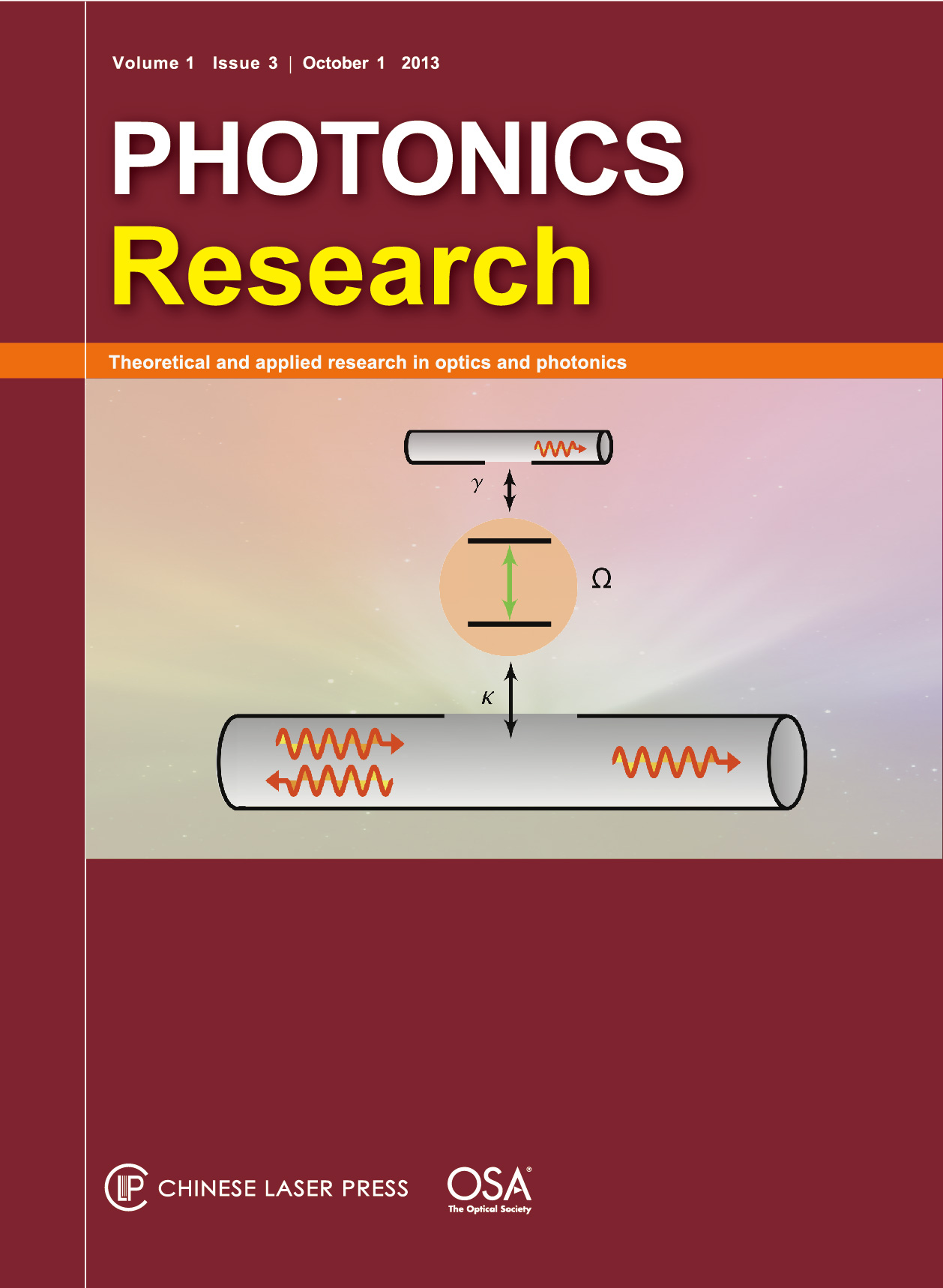 View fulltext
View fulltext
For decreasing light loss and diminishing the aberrations of the optical system, an open-loop adaptive optics (AO) system for retinal imaging in vivo is introduced. Taking advantage of the ability of young human eyes to accommodate, there was only one single curved mirror to make the pupil of the eye conjugate with the wavefront corrector and the wavefront sensor. A liquid crystal spatial light modulator (LC-SLM) was adopted as the wavefront corrector because the LC-SLM can be made in a small size to match the sensor. To reduce a pair of lenses or focusing mirrors, the wavefront corrector and sensor are positioned in the noncommon path. The system adopts open-loop control and the high-precision LC-SLM guarantees the effectiveness of the AO system. The designed field of view is 1° on the retina (about 300 μm). The image quality was simulated with different mirror surface types, including circular, parabolic, and hyperbolic. A hyperbolic mirror with conic constant -1.07, which is close to -1, could best eliminate the aberrations. Theoretical analysis showed that the optical throughput of this system was at least 22.4% higher than that of a standard transmission AO system. In a practical experiment, a parabolic mirror was positioned in the optical path. Images of the cone photoreceptors and the capillary vessels were obtained successfully. This system simplifies the optical setup in comparison to the commonly used 4F systems while still guaranteeing the effectiveness of AO to correct the ocular aberrations.
This paper reports on high-performance waveguide-integrated germanium photodiodes for optical communications applications. 200 mm wafers and production tools were used to fabricate the devices. Yields over 97% were obtained for three different compact photodiodes (10 × 10 μm and intrinsic region width of 0.5, 0.7, and 1 μm) within the same batch of three wafers. Those photodiodes exhibit low dark currents under reverse bias with median values of 74, 62, and 61 nA for intrinsic widths of 0.5, 0.7, and 1 μm, respectively, over a full wafer. Responsivities up to 0.78 A∕W at 1550 nm and zero bias were measured. Zero bias operation is possible for 25 and 40 Gbps with receiver sensitivity estimated to -13.9 and -12.3 dBm, respectively.
We demonstrate the confinement of broadband optical energy in the visible to near-infrared regime in a threedimensional nanoscale volume with high energy efficiency in a nanostructure consisting of multiple nanoslits in dielectric chacolgenide material. We find that a broadband optical field can be confined down to the scale of 1 nm (λ∕650) with a confinement volume of λ3∕3 × 10The figure of merit of the nanostructure can be up to 10 times that achieved by plasmonic lensing and nanofocusing. Our work opens a new way for truly nanoscaled photonics applicable to nanolithograpy, nanoimaging, lab-on-chip nanosensing, single-molecule detection, and nanospectroscopy.
We report all-optical regeneration of the state of polarization of a 40 Gbit/s return-to-zero telecommunication signal. The device discussed here consists of a 6.2-km-long nonzero dispersion-shifted fiber, with low polarization mode dispersion, pumped from the output end by a backward propagating wave coming from either an external continuous source or a reflection of the signal. An initially scrambled signal acquires a degree of polarization close to 100% toward the polarization generator output. All-optical regeneration is confirmed by means of polarization and bit-error-rate measurements as well as real-time observation of the eye diagrams. We show that the physical mechanism underlying the observed four-wave-mixing-based polarization attraction phenomenon can be described in terms of the geometric approach developed for the study of Hamiltonian singularities.
In this paper, we report on the performance comparison of all-optical signal processing methodologies to compensate fiber transmission impairments, namely chromatic dispersion and nonlinear distortion caused by the Kerr effect, in a coherent 112 Gbit∕s dual-polarization 64 bit quadrature amplitude modulation system over 800 km standard single-mode fiber. We numerically compare optical backward propagation (OBP) with optical phase conjugation (OPC) techniques, namely. mid-link spectral inversion, predispersed spectral inversion, and OPC with nonlinearity module. We also evaluate a self-phase-modulation-based optical limiter with an appropriate prechirping to compensate for the intensity fluctuations as a hybrid approach with OBP. The results depict improvement in system performance by a factor of ~4 dB of signal input power by all-optical signal processing methods, which is comparative with ideal digital backward propagation where the high complexity is the intrinsic impediment in the real-time implementation of the technique with coherent receivers.
We develop a formulation of few-photon Fock-space waveguide transport that includes dissipation in the form of reservoir coupling. We develop the formalism for the case of a two-level atom and then show that our formalism leads to a simple rule that allows one to obtain the dissipative description of a system from the nondissipative case.
The optical properties of germanium can be tailored by combining strain engineering and n-type doping. In this paper, we review the recent progress that has been reported in the study of germanium light emitters for silicon photonics. We discuss the different approaches that were implemented for strain engineering and the issues associated with n-type doping. We show that compact germanium emitters can be obtained by processing germanium into tensile-strained microdisks.














